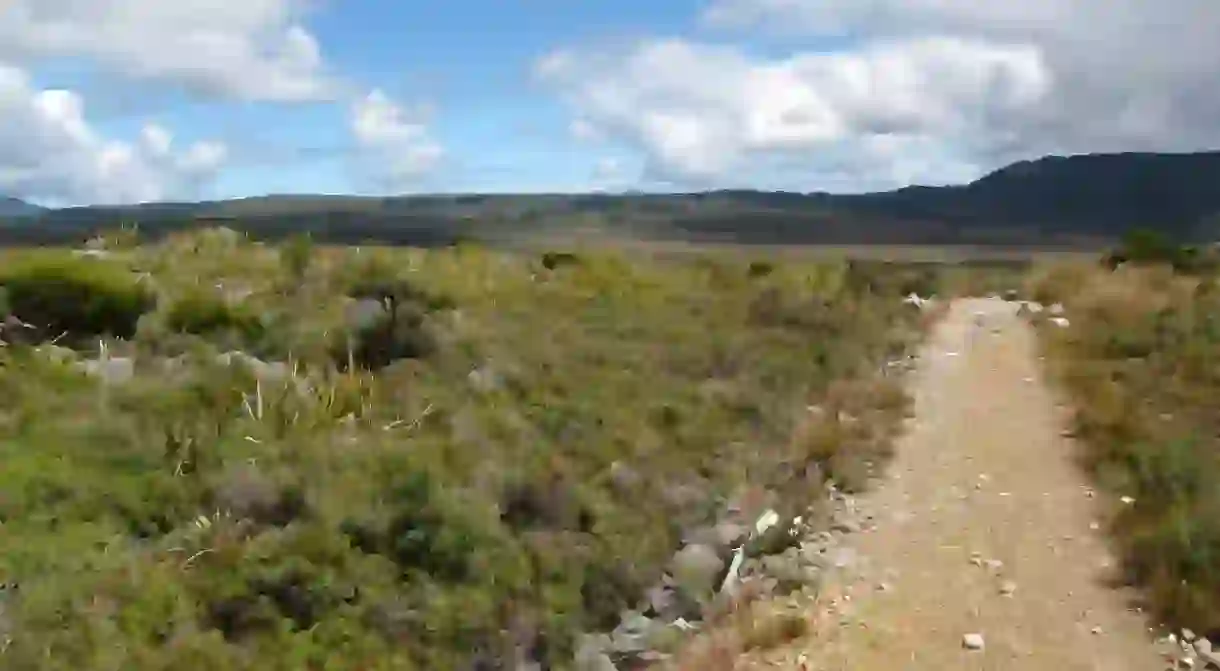The 7 Most Beautiful Spots in Heaphy Track, New Zealand

There’s a reason the Heaphy Track is among New Zealand’s most loved multi-day hikes. The route is adorned by expansive tussock downs, lush forestry, wondrous native trees and roaring waterways. Here’s your first look at the most beautiful spots trekkers tackling this epic journey can look forward to.
Flanagans Corner
Flanagans Corner is the highest point on the Heaphy Track. Hikers will reach this 915-metre-high (3002 feet) marvel as they conclude the first section of their trajectory. A short pathway just before the Perry Saddle Hut will lead you to its main viewing point, where you’ll be able to sight some of the finest mountain vistas of the entire trek.

Gouland Downs
Gouland Downs is situated past the hut with the same name – the latter of which marks the end of the second stretch of the hike. The area is lined by tussocks and river beds, which are definitely worth exploring on a clear day. This spot is known for its ‘featureless’ aesthetics, which can confound explorers once the mist sets in, but the rivers and swing bridges on the route ensure there are plenty of captivating sights to discover as you’re passing through.

Mackay Downs
Mackay Downs joins Gouland Downs as hikers venture across the grassy flats over the Saxon River to traverse one of the many swing bridges along the multi-day tramp. This area offers a slight contrast to its predecessor. Here you’ll find pockets of tussock as well as patches of shrubs and beech forests. As you meander across the nearby creeks, you’ll also find a shimmering collection pink granite paving the trails below your feet.

The Tasman Sea
The Tasman Sea is best viewed by the mouth of the Heaphy River near the James Mackay Hut. Set your sights just above the nearby track and you’ll spot the open terrace that brings both the river and the sea to the fore. It’s also worth noting that this is also the part of the trip where you’ll be exposed to the stunning forestry the West Coast region is particularly revered for – the area is enveloped by native beech trees which are noteworthy for their breathtaking lushness.

Heaphy River
The Heaphy River can be seen – and heard – throughout the last three sections of the hike. This massive stretch of water can be quite noisy and turbulent after a heavy bout of rain, but during mild weather spells the river flows quite peacefully. The Heaphy River’s suspension bridge runs across 148.4 metres (487 feet), making it the longest structure of its kind built by New Zealand’s Department of Conservation.

Lewis River
The Lewis River is a small waterway that runs alongside the Heaphy River as the track’s iconic nikau palms begin to emerge. It was named after Charles Lewis, the first land surveyor to explore a route proposed by the explorer James Mackay – who envisioned the establishment of a bridle track running alongside Collingwood (northwest of Golden Bay, near Nelson) and the West Coast. These days, Collingwood’s proximity to Kahurangi National Park (where the Heaphy Track is situated) has made the town a prime eco-tourism destination.

Kohaihai River
The Kohaihai River mouth marks the end of the Heaphy Track. A bridge surrounded by wind-blasted shrubbery takes trekkers from Kohaihai Saddle to the gushing river. As you walk towards your final destination, you’ll be able to marvel at forests lined with native vines, groves and nikau palms as well as being able to make a couple of detours towards the coastlines – Koura Point and Scotts Beach being the key highlights to set one’s sights onto.














